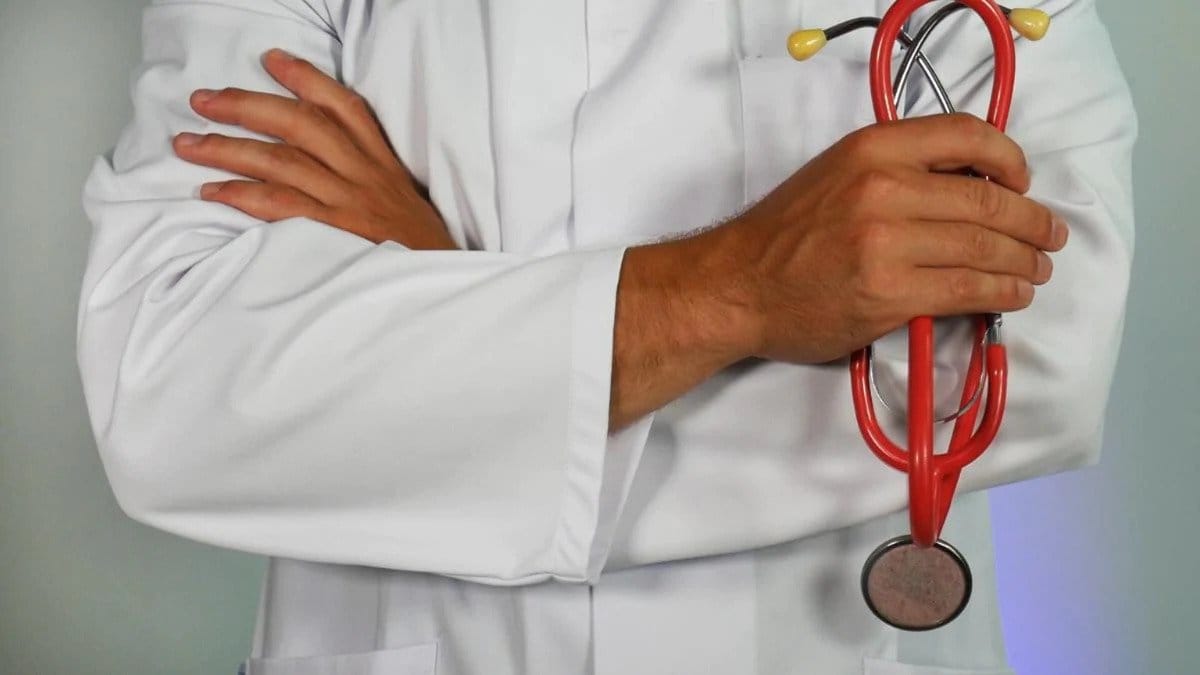[vc_row][vc_column][vc_column_text]
The WHO formally declared the novel coronavirus severe acute respiratory syndrome coronavirus (SARS-CoV-2) outbreak a pandemic on 11 March 2020 with the publication of public health guidelines to guide the pandemic response. Serious illness may need hospitalization and ventilatory support.
To reduce the risk of person-to-person viral transmission during the COVID-19 pandemic, the Indian government introduced various measures including ‘lockdown’ on 23 March 2020 with ‘social distancing’ and ‘self-isolation’ strategies and recommended shielding of at-risk individuals. The lockdown measures reduced the movement of individuals and consequently have had a significant impact on the daily life of Indian people with disruption of economic, social, and access to healthcare facilities. This has made people fearful, anxious, and sometimes they have found it difficult to access emergency treatment. India has a combination of government and private healthcare facilities for providing medical care.
Due to fear and to avoid the risk of spreading the novel coronavirus SARS-CoV-2 infection, many hospitals have closed their doors to patients who have been trying to avail these facilities. This has led to restlessness, irritation, and sometimes despair when trying to find medical help. As a consequence of this, people have shown their frustration by verbally abusing and threatening to physically assault doctors and other healthcare workers.
CURRENT SITUATION
Doctors and healthcare workers who are responding to a global health crisis—trying to protect individuals, families, and communities in adverse situations with stretched resources, shortage of personal protective equipment (PPE), and other equipment’s—have found themselves as unexpected targets in the fight against COVID-19.6 There have been several reported incidences of such violence against them during this pandemic time in India.
Although the exact numbers of such cases cannot be determined, there are a few glaring examples: on 8 April 2020, two trainee doctors in New Delhi were allegedly assaulted by a neighbor who accused them of spreading the disease. On19 April 2020, the burial of a neurosurgeon who had died after contracting COVID-19 in Chennai was disrupted by a mob who attacked the undertakers.
The citizens’ opposition was due to a misconception that the contagion may spread in the neighborhood if the surgeon was buried there.7 A group of public health workers in Indore, a city in central India, who were trying to ‘contact trace a person, were descended upon by a group of 100 people pelting stones and drove them away. Increasingly, reports pour in of doctors being spat on, hurled abuses at, and driven away.
CHALLENGES FACED BY THE DOCTORS AND HEALTHCARE WORKERS:
The violence against doctors and other medical personnel has increased over the past few decades, with up to 75% of doctors facing this during their practice in India.8 Doctors attribute the surge in violence against healthcare workers to a mix of ignorance and fear, which is amplified by the pandemic.
The lockdown has exacerbated the problem, with patients unable to access healthcare due to transport suspension, fear of law enforcement, and frustration following quarantine or containment zone restrictions. The types of attacks have ranged from verbal abuse, verbal threats, or aggressive gestures in the majority of cases.10 However, there have also been serious reports of manhandling, abduction, and murder.
The reasons for violence against healthcare workers may vary from fear, anxiety, panic, misinformation (as to how the SARS CoV-2 virus outbreak may spread and affect individuals), mistrust, and misplaced quotes in social media. Government hospitals in India are inundated in such public health crisis with lack of adequate facilities, equipment and infrastructure are other quoted reasons.
The private hospital sectors have largely shut down to non-emergency admissions, and people find it difficult to access medical aid. The aggressive emotional response of relatives may sometimes boil over with frustration exhibited in the form of damage to the healthcare facilities and verbal or physical violence against the healthcare personnel. The situation is being made more difficult as health units and professionals in some government hospitals highlight shortage of PPE but do receive a hostile response from hostile hospital administration. Health professionals are recognized as ‘newer untouchables’. People are panicked about catching COVID-19 from medical workers or being stigmatized for having contracted it themselves.
STRATEGIES TO COMBAT VIOLENCE:
Better communication:
Better and timely communication with the aggrieved patients and their family members is the key to avoid violence and untoward incidences. Due to shortage of time and to maintain social distancing norms, often the verbal and direct communication between doctors and patients is lacking during this pandemic. It leaves the patient and the family ‘in the dark’ and unsatisfied. The hospitals should designate some social workers and counselors to coordinate with them on a regular basis to allay any fears.
Role of media:
Social media including both the printed and digital media has a significant role in the spread of information in India and are known to sensationalize stories about medical negligence and malpractice. The widespread news coverage about COVID-19 has heightened anxiety and fear among the Indian public. Social media platforms can play a positive role in the current pandemic collaborating with Government agencies to provide an effective information campaign to educate the public about the diagnosis, spread, containment, and prevention strategies against COVID-19 transmission. The uptake of ‘Aarogya Setu’—the Indian government’s COVID-19 contact tracing application—can be promoted by smartphone technology companies and web providers to minimize the spread of COVID-19, thus help to safely reduce lockdown measures. This will help prevent a ‘second wave of a viral outbreak in the future.
Self-defence:
Violence against doctors is underreported in India, perhaps because the doctors fear for their personal safety and harassment from the public, administration, and law enforcement system. Recently, doctors and government institutions have started to take steps to protect themselves against violence. Marshalls have been posted at large central government hospitals in Delhi in their accident and emergency department. The All India Institute of Medical Sciences, New Delhi, has started self-defense training among doctors for protection.At places, doctors have had to evaluate patients from a distance to avoid assault and this hampers history taking and examination of the patient properly.
Role of telemedicine:
Telehealth has been a game-changer and one of the positives that have emerged out of this COVID-19 pandemic and will be an integral part of healthcare in the post-COVID-19 era. The use of telehealth will reduce the face-to-face contact of patients and thus may reduce the physical assault on the doctors to some extent. The thought of recording telemedicine services may force the patients and their caregivers to behave properly and thus prevent verbal abuse and threats.
Role of education and better primary healthcare:
Education of the masses and better access to primary healthcare services is vital to reduce violence against doctors and healthcare workers. Time has to identify effective ways and means to improve and strengthen public health education and practice. This is necessary not only to educate the population about the importance of prevention of infection, hand hygiene in preventing communicable diseases prevalent in India but also the importance of various healthcare workers in delivering healthcare programs. Doctors and healthcare workers need to be supported in carrying out their fight against global health crises such as the COVID-19 pandemic, understand their limitations due to lack of resources, and thus minimize incidents of violence. The establishment of better primary healthcare facilities such as Delhi’s Mohalla (community) and Mumbai’s Swasth (health) clinics is one of the right ways forward to access local healthcare.
5 Healthcare job roles in high demand due to Covid-19
The Covid-19 pandemic has put some of the healthcare systems under immense pressure and stretched others beyond their capacity. But the healthcare providers have been shown more support, teamwork, and gratitude than they ever have.
The rate of unemployment in India increased by 20% from the month of March 2020 but the spread of the new coronavirus has shown us the importance of healthcare jobs. As the number of infected continued to rise, the healthcare professionals themselves began to get sick. There is now a burden on quarantine centers, hospitals, and nursing homes, and healthcare facilities are in need of additional help and backup staff.
The impact of a pandemic on healthcare employment is very positive and it is projected to grow markedly faster than the average of all occupations. According to the Bureau of Labor Statistics (BSL), healthcare jobs are in high demand and projected to grow by 14% between 2019 to 2029.
1. Registered nurses
Due to the outbreak of Covid-19, there is a huge demand for nurses. According to the BSL report (Bureau of Labor Statistics), the growth in the employment of registered nurses is projected to grow 7% from 2019 to 2029.
The reasons behind the growth in this occupation are that as many nurses get infected due to Covid-19. And as the number of infected cases increased, the government asked all medical facilities to earmark isolation rooms, Quarantine centers.
2. Clinical laboratory technologists and technicians
The role of clinical laboratories in today’s healthcare system is very important. The workload for many labs has dramatically increased due to Covid-19 testing which increases the demand for lab technicians.
The laboratory has always been there working behind the scenes and supporting patient-care teams. This current global pandemic highlights the key role of laboratorians who collect the swab samples and perform tests on collected samples.
3. Epidemiologist
When disease breaks out or other threats arise, epidemiologists are on the scene to investigate, searching for the cause of the disease, identifying those who are at risk, and figuring out how to control the spread.
They can work in private or government offices and also in laboratories. During this pandemic, there is huge demand for epidemiologists.
4. Research associate and API expert in pharma
As the pharma industry is racing to find a cure to the Covid-19 to managing existing drug demand and India is the largest supplier of generic medicines all over the world.
The most popular roles here are the roles in regulatory affairs and of an API expert. Also, there is a high demand for people in clinical trials and product development
5. Biotechnologist
With the rising numbers of Covid-19 infection cases, the development and production of rapid testing kits, PPE are in high demand.
The scientists and researchers from the biotech industry are working in collaboration with the IT sector to develop smart and rapid testing kits and many are working in the labs to develop the vaccine.
This pandemic has unveiled the importance of a Biotechnologist.
The coronavirus pandemic is just beginning. Many epidemics like Covid-19 could occur in the future. And that’s why the focus is on the healthcare sector more ever. All the nations across the world have increased the budget for the healthcare industry.
Many companies are investing in the health sector. This has created a lot of employment opportunities in the healthcare sector and will create a lot of jobs in the future as well.
[/vc_column_text][/vc_column][/vc_row][vc_row][vc_column][/vc_column][/vc_row]




